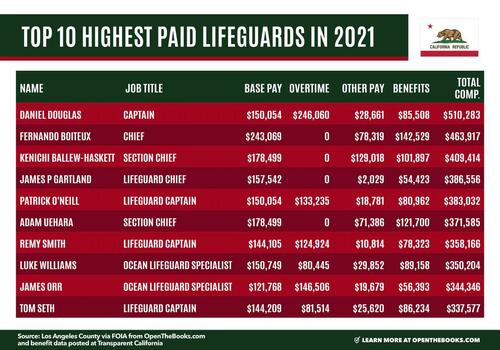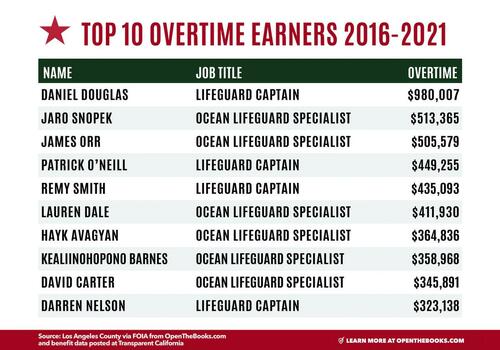Last week, Marin County, California, passed an emergency 45-day moratorium on new short-term rentals in the western parts of the county to address its pressing housing supply and affordability crises. Officials have expressed the hope that pumping the brakes on new Airbnb listings will preserve some of the area’s limited housing stock for native renters and homebuyers.
“Visitors from around the world enjoy our county’s natural beauty and contribute to our economy,” said Sarah Jones of the Marin County Community Development Agency earlier this month. “But it’s a growing problem that the people who work in West Marin be able to live in West Marin.”
A county report on the moratorium notes that 551 of the 5,250 homes in western Marin County are being used as short-term rentals. The report says this is contributing to a housing shortage and an attendant affordability crisis that’s driven average rents to nearly $3,000 and median home prices to $1.8 million.
The moratorium is intended to buy the county time while it crafts new restrictions on Airbnbs. Limiting the supply of vacation rentals is one way to address a shortage of homes. An alternative would be to just build new homes to meet demand.
But that’s easier said than done in Marin County, where regulatory red tape and legal challenges have kept one proposed 43-unit subdivision in planning hell for nearly 50 years. The long saga behind that project suggests that a world where there’s enough housing for both vacationers and longtime residents in Marin County is possible—if only it didn’t take half a century to approve a new subdivision.
The tangled legal history of the much-delayed project stretches back to the 1970s, when Marin County reduced the number of homes that could be built on a 110-acre site owned by developer The Martha Company from 300 to just 34.
That sparked a federal lawsuit from The Martha Company claiming the downzoning was a regulatory taking. In 1976, it reached a settlement with the county that entitled it to build 43 single-family homes on half the site. The other half would be reserved for publicly accessible open space.
Years of planning and abortive attempts to develop the property followed. By 2005, The Martha Company and the county were back in court, after the latter sued to overturn the 1976 settlement agreement. That effort failed. Another settlement was reached in 2007 once again affirming The Martha Company’s right to build 43 homes on its property.
But victory in federal court only freed up The Martha Company to enter the gauntlet of state-mandated environmental review.
The 1970 California Environmental Quality Act (CEQA) requires that governments prepare environmental impact reports for projects they have discretion over. That law guarantees citizens the ability to participate and make comments via public hearings on those projects. It also allows them to sue a local government if it approves an environmental impact report they think wasn’t thorough enough.
The law has become a favored tool of NIMBY (Not in my backyard) activists to delay or stop projects they dislike—whether that’s a new apartment building, a new hospital, or new college students—which is exactly what happened in The Martha Company development.
After filing a new development application in 2008, the company spent years going back and forth with Marin County officials and anti-development activists on the design of their project and changes that might mitigate environmental impacts it would have on landslides, fires, aesthetics, and more.
The Board of Supervisors rejected one environmental impact report prepared for the project in 2013. That sent The Martha Company back to the drawing board. In October 2017, on a narrow 3–2 vote, the board approved another, much-revised environmental impact report for a 43-home project on the site.
Several supervisors said at the time that while they didn’t want to see the site developed, they nevertheless felt their hands were tied by the multiple court agreements affirming the company’s right to build out the site.
But the board’s approval only precipitated another lawsuit from a nearby property owner, the unincorporated activist group Tiburon Open Space Committee, and the adjacent town of Tiburon—all arguing that the 850-page environmental impact report a decade in the making failed to comply with CEQA.
A major claim in their lawsuit was that the county had illegally contracted away its powers over new development by agreeing to the 1976 and 2007 settlements allowing The Martha Company to build 43 homes. As a result, it failed in its duty under CEQA to approve a less environmentally impactful 32-unit project on the site, they argued.
A Marin County Superior Court judge rejected those arguments in January 2020. In mid-May 2022, the First District of the California Court of Appeal likewise rejected their petition and upheld the approval of the project’s environmental impact report.
The appeals court found that the 1976 and 2007 settlements were valid. Therefore, the county was under no obligation to approve, or even analyze, a project with fewer units.
The court’s decision was unsparing in its criticism of anti-development activists’ abuse of environmental review to delay the project for so long, writing that “CEQA was meant to serve noble purposes, but it can be manipulated to be a formidable tool of obstruction, particularly against proposed projects that will increase housing density.”
“Something is very wrong with this picture,” the justices concluded.
That decision is good news for The Martha Company, which can finally move ahead with its project. It might also be good news for housing supply across all of California by putting some outer bounds on what CEQA requires.
Despite California’s well-deserved reputation for overregulating new housing development, the state does have several pro-supply laws on the books that limit the discretion of local governments to reject zoning-compliant projects or condition projects’ approval on density reductions.
Forceful as those laws might be on paper, they don’t relieve local governments’ obligation to comply with CEQA. It’s left open the question of whether those pro-supply laws are subordinate to CEQA.
That ambiguity, in practice, has allowed localities to “launder” denials of projects state law requires them to approve through endless rounds of environmental review.
In a recent blog post, Holland & Knight attorneys Bradley Brownlow and Jessica Laughlin write that the appeals court decision in the Martha Company case makes clear that legal arrangements guaranteeing developers the right to build a certain number of units aren’t superseded by CEQA, and that reasoning applies to state laws that limit local governments’ ability to deny or shrink projects.
“The Court’s holding is likely to be consequential with respect to the implementation of state laws that impose limitations on agency discretion over housing development projects,” write Brownlow and Laughlin. “Environmental review must be tailored to account for the legal infeasibility of project alternatives and mitigation measures that conflict with the agency’s legal obligation to approve projects at their proposed densities.”
In other words, local governments don’t have to waste their time studying the environmental impact of smaller projects or other mitigation measures they couldn’t force developers to build anyway.
Brownlow and Laughlin say that the appeals court decision could “cast a long shadow” preventing CEQA abuse.
That would be a welcome development. The more time that housing projects spend on the drawing board waiting for approval, the more time people spend bidding up the prices of housing that’s already been built. One seminal 2002 paper from researchers Edward Glaeser and Joseph Gyourko found that even delays of a few months can significantly increase the price of homes in subdivisions of 50 units or less.
In recent years, the California Legislature has carved out exempted things like transit projects, college admissions, and local upzoning measures from CEQA. Wholesale reform of the law is still a political third rail.
Judicial opinions that clarify and limit CEQA’s scope are probably the best critics of the law can hope for. At a minimum, the appeals court decision in the Martha Company case will probably do more good than a temporary ban on new Airbnbs.
The post County Where It Took 50 Years To Approve New Subdivision Bans New Airbnbs appeared first on Reason.com.
from Latest https://ift.tt/9D5O4mZ
via IFTTT

























